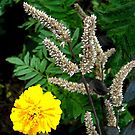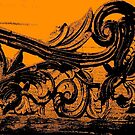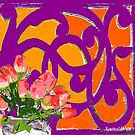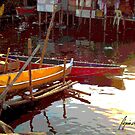Saturday, September 29, 2007
New Ball Game
I have done a lot of press releases for ground marketing and came up with a lot of PR strategies but this one is different since marketing has to be done via the world wide web. I am now relearning what I have earned from my many years of exposure to PR. It's an entirely new ball game.
Sending those press releases to ezine mags, press release distribution centers, and preparing and submitting blog entries to search engines to draw traffic to our storefront [link] are amazing experiences. And I'm beginning to get the hang of it .
Imus is Home

Imus. This is my hometown. I was born and raised here. And I still live here. Though it has been confronted by problems like any burgeoning town, it has lived through them probably due to the resiliency of its town folks. It is this aspect that I thought would work best in pictures.
As I got off a purple tricycle in the morning of August 24, I was surprised to see students and teachers of Del Pilar Academy led by their principal Priscilla Moriones (a close friend of mine, by the way) doing a clean-up of the General Licerio Topacio Park. It was part of a project led by the new local government, I learned.
So I went on to work and take pictures under the 34 degree-Celsius heat and realized how different things were. Life in my hometown during my college days (the late 80s), seem simpler and more quiet. I missed the well pruned pine trees where, under one of which, our circle of friends would spend long hours of chatting about issues involving Marcos.
I had a hard time taking shots of the old Municipal Hall for so many vehicles of many forms, including one Toyota Eclipse, kept on zooming in front the ancient structure which now is the public library. It has a terrace or balcony overlooking the Gen.Topacio Park. That terrace has been witness to many fleeting youthful bliss. The building also has a ball-room-like area where mini-programs, rehearsals, and exhibits were held. That was where I met Nida Blanca, Lino Brocka, and saw a young and playful Gretchen Barreto playing along the wide wooden staircase. They were, I recalled, having a break during a shooting of a film. The hall was also a silent witness to the short-lived revival of traditional or conventional art in Imus. Simon Saulog, the 1940s Filipino master of the Madonna, taught us hobbyists, the fine rudiments of pencil sketching, pastel and oil painting on that very place as the gray-haired and dashing Mayor Jamir would occasionally visit us. It was so sacred to many of us, then.
I literally shook my brain and told myself: It’s 2007 ! So off I went to take a shot of the next building. It is the new municipal building with glass that shone like solar panels!
I moved to the Cathedral only to find out that I need a new set of batteries for my Olympus digicam. Darn! So off I go to the nearest mall for the batteries (Yes, ladies and gents. The Mall. We have five nearby big shopping malls.)
On my way back, I couldn't help but stop by McDonald's newest second store but not to have a bite of a quarter pounder but to take pics of its colorful facade. How could one forget Sharon’s “love ko ‘to” line, a localized tagline of McDonalds’worldwide “I’m lovin it” image campaign. Talk about marketing and packaging! The store design always comes in handy. Foreigners, I have observed, rave about the fashionable McDonalds stores here in this part of the world though it has been perceived as a symbol of modernization and globalization by many. And Imus has not been spared.
Back to the town plaza, there were two teachers redoing the markers of the historic plaza which has not been done by anyone else for decades. I was so moved that I instantly took a shot. I crossed the street and headed for the Imus Cathedral. Thank God, the parking lot, right in front of the Cathedral was empty! So I shoot from a distance and knelt to give it a panoramic effect and I later found out that a street kid in red was right before my camera. Not bad, I told myself as I view the composition of the image on my handy camera. It was strange but the kid seemed to have appeared from nowhere.
Next stop was the children's playground where I used to play as a kid after a Sunday mass. This is also where I have dropped countless numbers of local ice cream on cone. It has now been reduced to several square feet. The school kids didn't even mind my taking pictures of them for there seemed to be so much joy all over the place.
There are still so much to take pictures of- the historic sites of battles of the revolution against the Spanish Conquistadores whose legacy is still evident in our way of life, the hispanic and turn-of-the-century houses of the prominent families, the old arsenal of the Hacienda de Imus under the Recollect friars, the few remaining rice fields, and the river we have been trying to save. They certainly wouldn't fit in one 16 x 20 collage for a deviantart.com photo contest sponsored by TThealer and Lady Alice of Oz. It was billed “Show Me Your Hometown Photo Contest” where among 24 entries, I placed third. A photographer-artist from Rousse, Bulgaria was first and another one from Buenos Aires, Argentina, second.
Of course, the elation was overwhelming and the adulation I received from the global community of artists is incomparable but the most valuable is realizing how fortunate I am to have been born and raised in Imus. On that Saturday, August 24, I have witnessed people value and cherish the legacy of the past. And despite the problems, ready to embrace what the future holds. Yes, this is Imus and it’s my hometown. ###
An Artist's Dream and the Maestro

"Look, ma! He can draw!"
I am certain I was barely six years old when I heard my Kuya Boy blurted out those words to my mom. With a blue ballpen, I went on to finish drawing little Audrey from a comic book on sheets of pad paper with gusto. I just smiled back at my mom and brother who were then so delighted at what I was doing on the pasimano.
Since then, people have raved about my so-called talent and it was the only thing I really love doing when I was in grade school. My projects in arts were always displayed on classroom bulletin boards. And I did make a name for being a little artist.
For the child in me who always finds refuge in a lot of playing and doodling, it spelled happiness. It was all I have; my only world!
Everyone thought I'd be an artist that I'd set my mind on taking fine arts in college. But most parents believe there's no money in painting; mine is no exception.
My world crumbled. It was the end. I could not be a painter! It was so revolting
that I had to kick my poor sheepdog named Shaolin to release the angst.
I just could not recall how I recovered or maybe I have just given up. I pursued my second option -becoming a writer and an educator much to the displeasure of many of my elders. Somehow, I did become a writer and I thought that was it. But the artist in me kept creeping into my system.
At a time I thought I have abandoned dreaming of becoming an artist, I met Simon Saulog.
It was in 1983 and I was president of our town's Painters' Club. We held exhibit dubbed Lapis, Papel atbp. with former Imus Mayor Jose Jamir as guest.
Mayor Jamir's attendance was with good tidings. He invited us to represent the young generation of artists of Imus in an exhibit that will honor a master painter, Simon Saulog.
A master painter from Imus?
We were all intrigued for that was the first time we heard his name. All we know about the Saulogs is a bus line plying the Cavite-Lawton route in Manila. So Mayor Jamir arranged a meeting so we could meet Saulog in the municipal hall.
And so we came and there was the maestro in his thick glasses; very quiet. He burst into a boyish smile when he saw us enter the mayor's office. It was like he could smell artists from afar. In a matter of minutes, we felt like we have known him for ages.
That meeting was to be a turning point not only of my life but .my friends as well. He was so proud of what we were doing that he volunteered to coach us for free. And later, he became our adviser when we moved on to be a socio-civic organization called the Malayang Sining.
For a year, we held sessions with the maestro at the municipal hall every Sunday.Being with Saulog was like a long educational journey, not a trip. The successive visits to Mabini and Ermita in Manila, especially the old Palermo gallery along UN Avenue were exhilarating.
His experiences during the pre-war Philippine art especially the "battle royale" between modernists and conventionalists, the Huks and the NPAs, his contemporaries at the UP College of Fine Arts, politics of that time, were good enough for screenplays. We were caught in a time warp. Listening to him was leafing through the pages of a journal turning yellow.
It was then that we realize the magnanimity of our dear maestro. It was then that we realized how a man like him could fade into obscurity.
I personally could not forget how embarrassed he was when we went to the National Museum to show us one of his earliest works; only to learn that it was nowhere to be found in the museum. We left the museum with the maestro's deafening silence.
I could not forget how his eyes were when he learned that there was a move to make Legaspi, one of his contemporaries, national artist; when he came across published articles praising Anita Magsaysay-Ho. He could not forget her.
And there were so many questions in my young mind then. I couldn't believe that he almost lived the life of a pauper. But the answer came from him. He believed that money is "bulaklak lang ng buhay". He did not use his passion to make money. So my parents were right, after all, I thought. But I was mesmerized by his canvasses. They all have the touch of a master. They were gems. To my young eyes, they were bedazzling that I went on to dream.
Something must be done (not about my dream), we thought. He was after all the acclaimed Filipino painter of the Madonnas of the 1950s! And the Malayang Sining saw my pen as an instrument. I was tasked to write about the life of our maestro. The journey into his personal life began in 1986 and it has not ceased, though our maestro bade this world farewell in 1995. He may not have seen the fruits of our labor as young artists then, but we have always had the seeds he planted in our hearts.
Truly, God has a reason for everything. I realized why I felt so helpless in helping him during those times. I have always thought of giving up on a lot of things. And one of them is Saulog's biography. Then, I could not fathom why. It was not the right season.God was to create more time and people to lend me a hand through my colleagues at the Institutional Communication Office of De La Salle University-Dasmarinas (DLSU-D), Philippines.
DLSU-D is celebrating its silver jubilee and part of the celebration is feting a prominent Caviteno in the person of Simon Saulog. A compact disc on the life and works of the maestro, authored by myself, was launched in a three-week exhibit opened by the Hon. Helena Benitez and held at the Museo De La Salle.
The event was a product of collaborative work for a deserving man like our maestro. It is about the man himself; his humanity; his greatness.
I may not have lived a colorful life like him but Saulog remains an inspiration to me.
Now, I can almost hear my older brother saying: "Look, ma! My brother is an artist!" .
-Published, Philippine Panorama
February 9, 2003
A Master Dying In Oblivion
He was once called the master of the Filipino Madonnas of the 50s. Mentored by Filipino masters Amorsolo and De La Rosa, Saulog became a popular student artist at the old UP College of Fine Arts and later became a perennial winner in various Art Association of the Philippines contests.
I fondly called him Tata Simon, an expression of respect to elders among barrio folks like me. His name echoed as I stumbled on a digital shot of one of his Madonnas in my PC files. As I was manipulating the shot with Photoshop to give it a modern flair, I began to recall moments with him during my college days. How we first met and how he later became our mentor and adviser in our art group we put up for young hobbyists of the town of Imus in 1984.
I never knew that a master painter of his magnitude existed in my hometown. The excitement and curiousity led to my writing about him and documenting practically what he did then.
I soon learned how he bade the "asphalt jungle" of Manila farewell and he started concentrating on his palette in our rustic hometown. He went on to create canvases that stood out because of the somewhat sepia shades and amazing highlight techniques.
I have wished to learn the technique but failed. The degree of patience is overwhelming. Layers and layers of oil paint are what he gradually and painstakingly did. And this is the artist that modernists once mocked as calendar artist!
I was witness to many of his incomparable labors and to his failing health.
He left this cruel world without fuzz. I doubt if art students of this generation know him. Local art books never mention him. Oh, there was one with "Simon" mispelled as "Simeon".
Simon Saulog died in oblivion like many artists but the stories in his paintings will live on.















